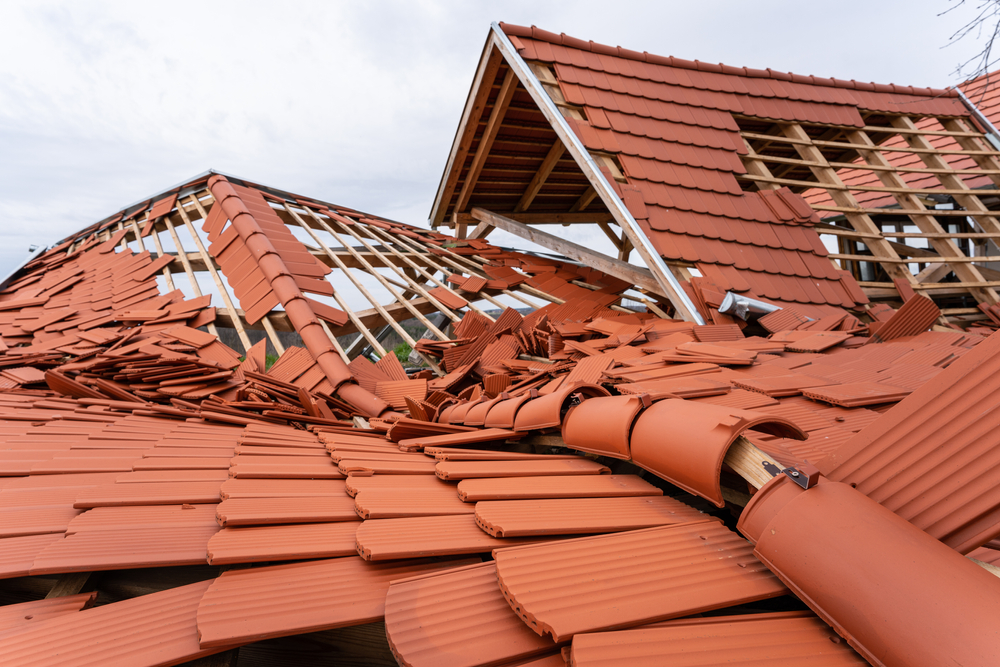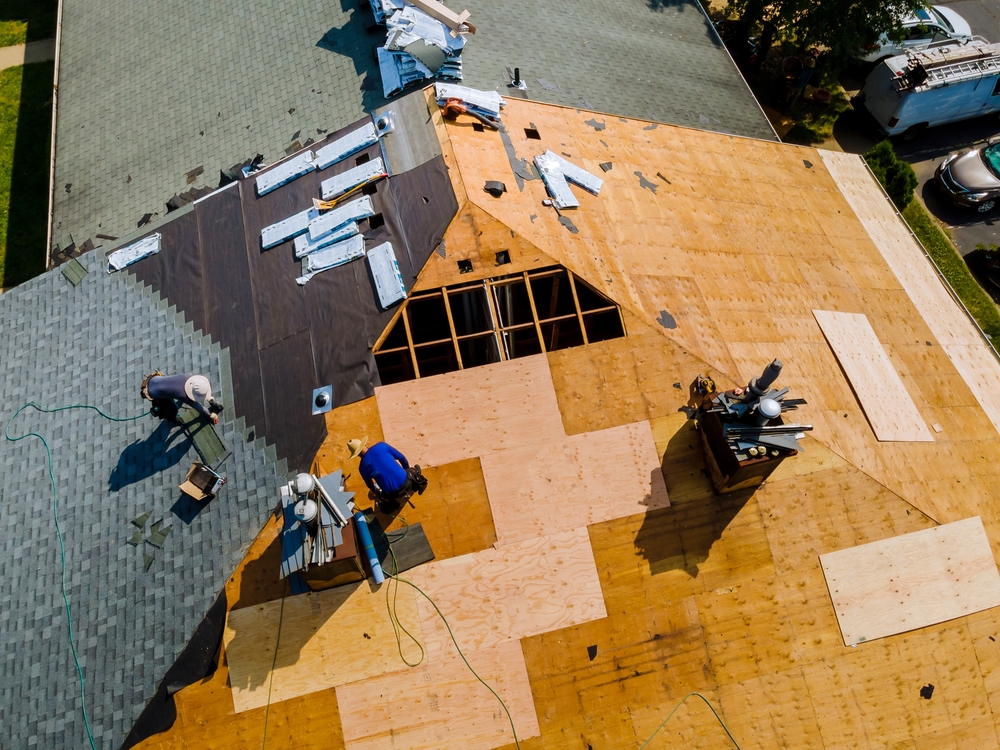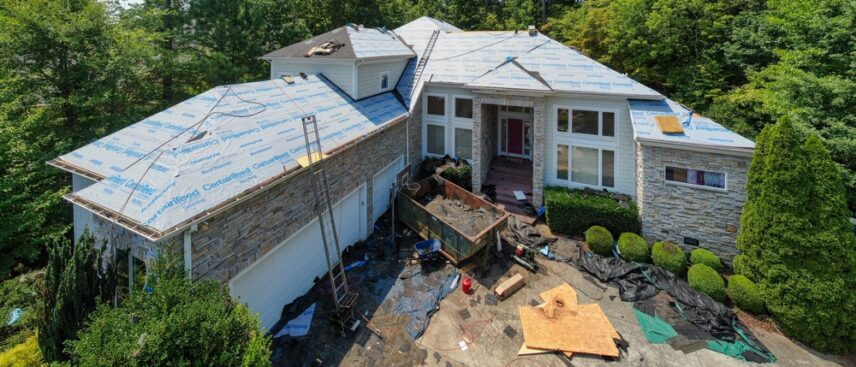Your home’s original roof will last for decades, but eventually, it will need replacement, no matter the material. There’s no roofing that can last forever, although some materials last longer than others. A timely roof replacement protects your home from water damage. Letting the roof go too long leads to leaks and other problems.
If you suspect that your roof is reaching the end of its life and will need replacement soon, get prepared for the process with a little knowledge.
Understanding When a Roof Replacement is Necessary
You don’t want to wait until you’re experiencing leaks or seeing your roof sag if you can help it. Getting a timely roof replacement while your roof still has a little life left protects the rest of the structure. There’s no need for roofing expertise to spot the early warning signs that your home is ready for a big repair like this one.
Age of Your Roof
In general, you should replace your roof when it’s nearly the end of its lifespan for the material covering it regardless of visible damage. Extensive testing has established fairly clear timeframes for when you can expect each type of roofing to fail.
- Asphalt Shingles: 15 to 20 years for three-tab shingles, 25 to 30 years for architectural shingles
- Standing Seam Metal Roofing: 45 to 80 years, depending on gauge and material
- Metal Shingles: 25 to 50 years, depending on gauge and material
- Concrete and Clay Tiles: Up to 30 years for concrete tiles, up to 100 years for clay tiles
- Wooden Shake Shingles: 25 to 30 years
- Slate Tiles: 150 years or longer, but only with regular maintenance to replace damaged or missing shingles
- Composite Tiles: 30 to 50 years.
As you can see, you can expect at least a decade or two of performance out of every roofing material. After that point, you should start preparing for the eventual need for a roof replacement.

Extent of Damage
Minor damage that is limited to one area is usually repaired. But at some point, the damage can become too widespread to address with a few new shingles or some roofing adhesive. If your shingles are curling and cracking, your metal roof has lost its coating and is rusting, or your clay shingles have been broken in a storm, it’s likely time for a full roof replacement. Starting from scratch with new materials will give you peace of mind and save money over constant repairs to chase after spreading leaks or damage.
Multiple Leaks
A single leak is easy enough for a roofing professional to seal up with good results. Once the roof has multiple points of water entry, it’s much harder to solve the problem without a roof replacement. Leaks tend to form in critical areas like the valleys where two slopes meet and around penetrations like chimneys and vents. Leaks let moisture enter the structure, where it can cause rot even after it evaporates away. Protect your home by dealing with all leaks promptly.
Upgrading Your Roof
Even if you have a great roof protecting your home just fine, you might not like the look of it. There’s nothing wrong with choosing a full roof replacement as a way to upgrade to a higher-quality material or to get a new style. If you’re tired of asphalt shingles or want a new color to make the exterior of your home pop, a quick replacement can give the house a whole new look.
Benefits of a Roof Replacement
Getting a roof replacement is like putting a whole new roof on your home, especially if it’s a total replacement with new decking. You can breathe a lot of life into an older home with this single step.
Enhanced Protection
New roofing materials last longer and provide better resistance against water and storm damage. They’re less likely to crack, crumble, or blow away in a storm. Today’s roofing materials are also built better and from higher quality ingredients than in the past. The improved weatherproofing can help the rest of the home last for decades longer.
Increased Curb Appeal
A new roof significantly boosts your home’s value, not to mention its visual appeal. Every year your current roof ages it slowly reduces your home’s value. Selling your home when it needs a roof replacement puts you at risk of negotiations with the buyer to lower the sale price to compensate. By getting the replacement yourself, you’re making your home as attractive as possible to future buyers.
Improved Energy Efficiency
Choosing a more energy-efficient roofing material can save you money year-round. Reflective roofing materials are great in hotter climates where summer cooling bills only seem to rise. Adding insulation as part of the roof replacement process is also recommended if your attic hasn’t been updated recently.
Peace of Mind
Once you’ve replaced your roof, you’ll get decades of reliable performance from it without having to worry about leaks and other issues. You’re freed up to focus on other renovations and repairs, or just enjoying your home. Only a newly installed roof can offer that kind of peace of mind, especially if you’ve bought an older home and aren’t quite sure how much life is left in its current roof.
The Roof Replacement Process
With the right equipment and experience, a roofing crew can tackle the replacement process in just a few days to a few weeks.

Before The Replacement Preparation
The longest step in the process is generally obtaining the necessary permits for the work. You may need to wait a few weeks to months for your county office to respond and issue the permits. Don’t try to rush any work or complete repairs yourself until this step is completed.
Once you have the work permits for the replacement, you need to protect your landscaping with tarps and plastic covers. If possible, move all delicate items and planters away from the home’s perimeter. Identify a space where a dumpster can be placed as close to the home as possible to contain the debris generated during the removal process.
At this point, it’s time to choose a qualified roofing contractor. Discuss your desires for the project and collect quotes. Don’t forget to check the reviews for the company and request some testimonials from former customers to choose a reliable team.
The Removal Process
As soon as the roofing team arrives, they’ll begin by removing the current roofing material. Asphalt shingles come off quickly with the help of sharp shovels and similar tools that scrape them free. Other materials can take a little longer to remove due to the weight and fasteners used to hold them in place.
When the decking is fully exposed, the crew will inspect it and check for issues with the sheathing, flashing, and vapor barrier layer. All necessary repairs are carried out at that point to secure the roof’s structure. New vapor barriers are installed in most cases because today’s modern materials are much more water-resistant and durable than older materials.
During this process, all of the old roofing materials are stored safely in dumpsters and disposed of properly. Most materials will go to a construction waste landfill, but metal roofing and other materials will go to recycling centers whenever possible.
The Installation Process
As mentioned above, new vapor barriers and underlayments are recommended in most roof replacement cases. The shingles or other roofing materials will go in as soon as possible after the underlayment is completed. This prevents wear and tear on the protective layer from exposure to sun and rain.
Flashing then goes in to seal roof penetrations like chimneys and vents. Old flashing is rarely left in place through a roof replacement because it needs to layer over the underlayment and under the shingles in the right order. It’s also the part of the roof most likely to wear out and cause leaks, so you’ll want new flashing to go with your new roofing materials.
To wrap up the installation, the roofing crew will put in soffit and ridge vents and other finishing details like drip edge.
Final Inspection and Cleanup
When the work is done, the roofing crew will inspect their work and give you a chance to review it. Then, you’ll finish any necessary inspections from the county or city to complete your permits and ensure you meet the building code. After that, all that’s left is for the crew to clean up and remove their equipment.
Cost of Roof Replacement
Roof replacement costs vary greatly depending on the style of roof, the material you choose, and the size of your home. You can expect to spend anywhere from $10,000 to $40,000 on the project. Choosing high-end materials like slate or clay tiles can raise the cost even higher.
Finding a reputable roofer is the first step in getting a roof replacement after you’ve secured your permits. Look for a team that can handle any challenges your home throws at them to ensure a smooth and stress-free process.
